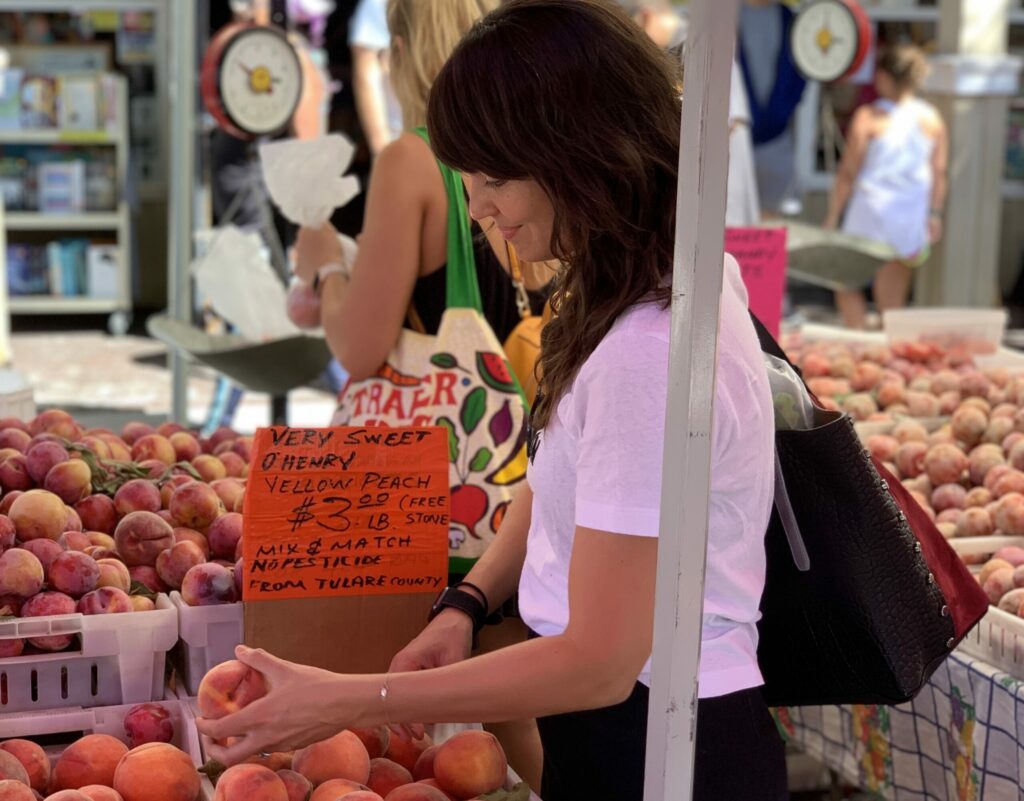We live in a time where our culture of convenience has created an environment of seemingly endless and instant food availability. According to the NYT, half of all the fruit and a third of all the vegetables Americans buy are grown in other countries. Anytime of the year you can access out of season produce that’s grown abroad. Before convenience was king, there was another way of approaching meals throughout the year based on what was being grown in local communities. Choosing to fill your plate with a majority of locally grown food has a variety of benefits. To learn why eating locally grown food matters and how it benefits the environment and your community, read on.
the benefits of eating with the seasons
There’s a seasonality to produce; like spring strawberries, summer blueberries, fall squash and winter greens. Eating with the seasons supports local, small farmers because you’re eating what they’re able to grow during each phase of the year.
Many large grocery chains feature locally grown produce indicated with signage. Eating locally grown, seasonal food means you’re getting the freshest food, picked at it’s peak rather than being picked early to account for travel time. And while we’re talking about travel, local produce doesn’t have to travel as far to reach your supermarket, co-op grocery or farmer’s market. That equates to less green house gas emissions in the atmosphere! While emissions from food miles are outpaced by the energy food production takes overall, seeking out locally grown produce and locally raised meats are great ways to lower your overall emissions.
Each season creates an abundance of produce; that surplus and minimizing of food miles makes seasonal food prices easier on your budget. There’s another added bonus to locally grown, reduced packaging. Because farmer’s are delivering their own produce to markets, the need for excess packaging is eliminated, reducing single use waste and the emissions associated with creating packaging.
We love, and can’t recommend enough, farmer’s markets for getting to know the availability of produce based on season. You’ll see the strawberry harvest dwindle as stone fruit and melons start to take their place. Farmer’s markets make conversations with farmers and artisans accessible, you can ask farmer’s questions about their growing practices and bakers about the flours they use. If seeking out seasonal food gets you to a farmer’s market, the community spirit of the event will keep you coming back.
local community
When you choose locally grown over imported food, you’re supporting your local economy. Studies have shown that local small businesses, including farms, recirculate money within the local community by buying from other locally owned small businesses and creating jobs.
Using a farm and restaurant as an example, Shift Workspaces used this scenario to illustrate how spending locally benefits the entire community – First, the farmer sells to a local restaurant, which in turn prepares the fresh produce and sells it to local customers. The farmer pays its local employees and the restaurant uses revenue from sales to buy supplies from a neighborhood hardware store.
The farmers you meet at your local market, those who are delivering food labeled locally grown in your supermarket, share in your community, investing in it before looking elsewhere.
conservation
Just outside of Nashville the Bells Bend Conservation Corridor consists of family farms who’ve come together with the common goal to preserve the rural farmland of the Bells Bend area. Geared towards open space preservation, they feature programs to help aspiring farmers, foster environmental stewardship and preserve the farmland that supplies area restaurants and feeds the residents of Nashville. There are many such non-profit programs across the country including the Mohawk Hudson Land Conservancy and the New Mexico Land Conservancy invested in conservation of farm land.
Many in the culinary industry, including farmers and chefs, are interested in and focused on showcasing and preserving their area’s agricultural history. Chef, Sean Brock, who brings the flavors of the south to plates in Nashville and Charleston, is invested in preservation of seed varietals and heritage animal breeds. He worked quite closely with Anson Mills’ Glenn Roberts whose work centers around saving seed and growing heirloom grains, legumes and oil seed varieties that were lost to industrial farming after WWII. A bit further west in the New Mexico mountain town, Taos, the Love Apple’s Jen Hart works directly with local growers and ranchers to create a mouthwatering, seasonal menu with local ingredients at the center of it all. No matter where you live, a little digging will turn up people who are invested in preservation and elevation of local agricultural.
Stanley Tucci’s exploration of the food regions of Italy in Searching for Italy reminds us that there is beauty in tapping into the rich culture of growing our own food and developing traditions around locally grown. When choosing food grown by a local farmer, you’re supporting the local economy, eating seasonally, lowing your carbon emissions and even helping to preserve agricultural history.
Find farmer’s markets and restaurants who support local growers using the Love Local search tool.



